The Link Between Art and Real Estate: How Culture and Property Collide in the Luxury Market
Explore how art and real estate are converging — from celebrity collectors and heritage estates to digital NFT homes redefining modern luxury ownership worldwide.
HOME & INTERIORSARTS & CULTURECELEBRITIES
By Zoe Blackburn
10/16/2025
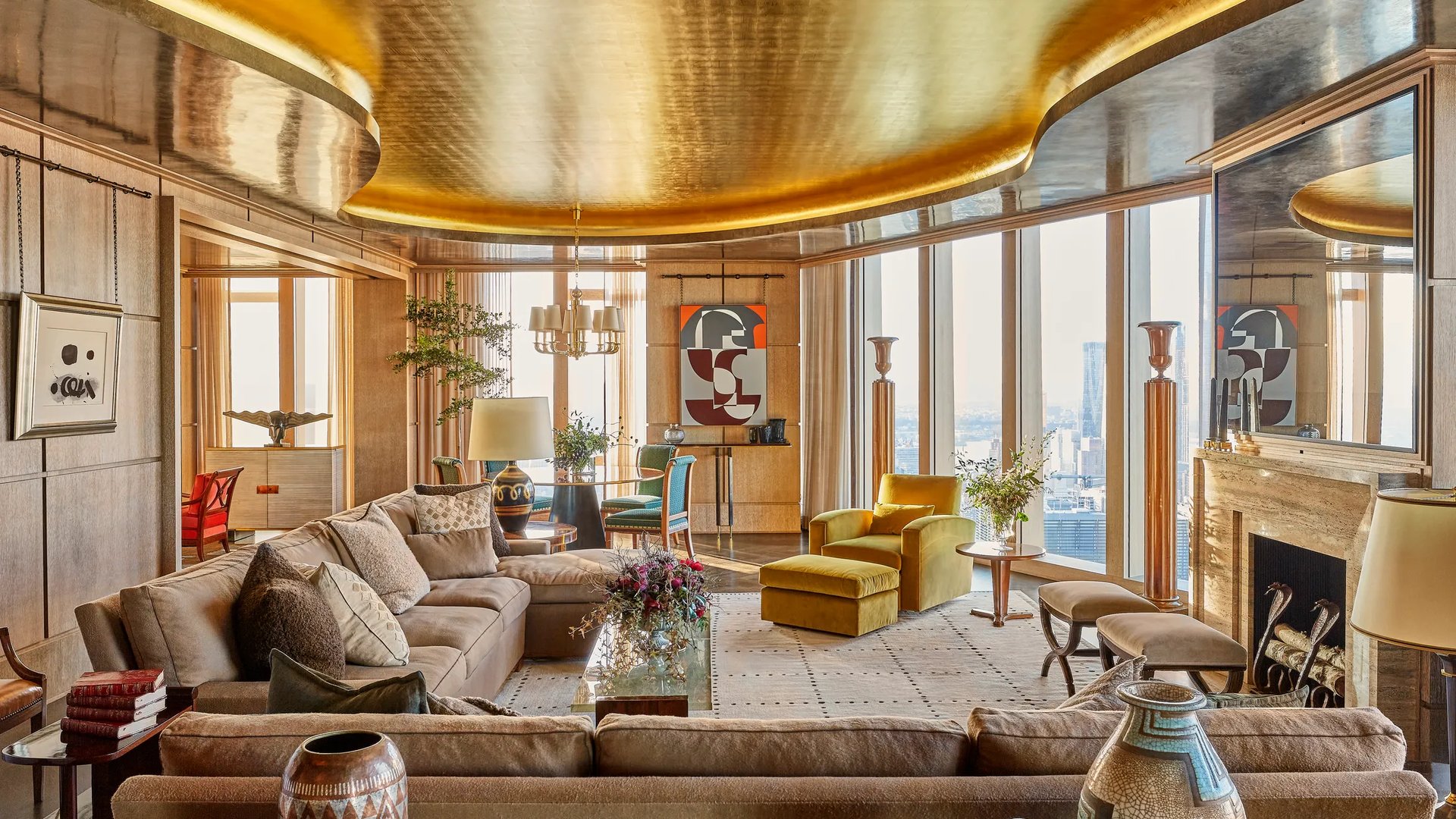
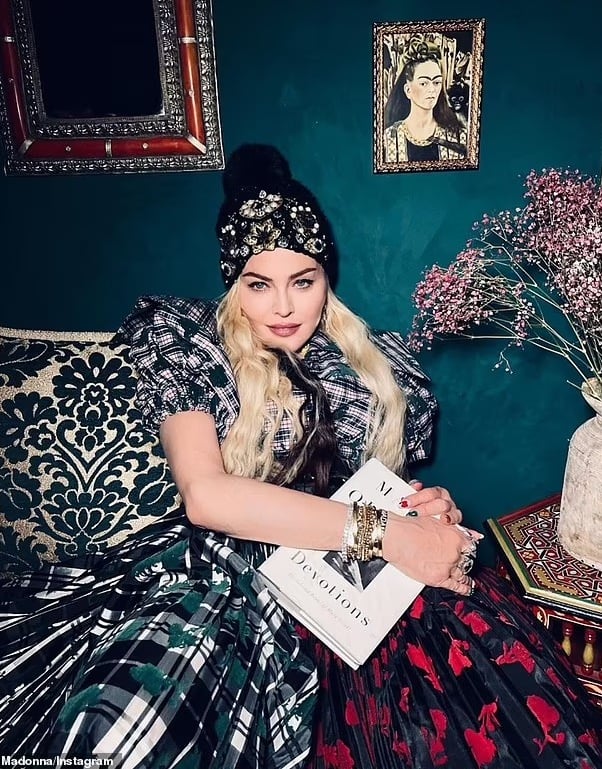

The Link Between Art and Real Estate
“Art, like real estate, is half science, half gut.” The art collector Jorge M. Pérez articulates a crucial link between fine art and luxury real estate: both are status symbols, both are a property or commodity, and both are an exercise in taste.
It is a truth universally acknowledged that the value of a property increases when there are cultural institutions — such as art museums — located nearby.
But recent trends are making the crossover even clearer. Paul Lester, a partner at The Agency in Los Angeles, now organises property viewings in Beverly Hills that double as art openings, with significant contemporary artworks carefully curated to increase property value.
Prospective buyers and art connoisseurs are encouraged to browse the individual artworks and architecture simultaneously, and the successful buyer is able to purchase an art collection and a luxury home in the same deal.
With the art and luxury real estate markets converging ever more closely, here are some key trends to be aware of.
Real Estate: The Rise of the Movie Star Art Collector
It’s no secret that Hollywood icons often invest their considerable wealth in art. Steve Martin’s private collection includes works by Edward Hopper and Roy Lichtenstein, while Jack Nicholson — whose estimated net worth is $150 million — owns works by renowned cubist Picasso and pop artist Andy Warhol.
But increasingly, celebrities are not only treating high-profile artworks as smart investments, but also as interior design features for their private homes.
Kendall Jenner, who has an estimated net worth of $45 million, has chosen to decorate her $8.5 million Spanish-style estate in Los Angeles with artworks by high-profile artists.
Above Jenner’s modern, minimalist fireplace, for example, is a large pink neon work by Tracey Emin, which adds light and brightness to the room with its incandescent glow. The contemporary feel of the room itself is amplified by the addition of a large contemporary art piece: the art and architecture are fluently in conversation with one another.
And Kendall is not the only one. Madonna is better known as a singer and movie actor, but she is also the owner of an art collection estimated to be worth $160 million, containing works by the surrealist Salvador Dalí and neo-expressionist Jean-Michel Basquiat.
In 2021, she posed next to one of her most treasured pieces, a self-portrait by surrealist icon Frida Kahlo, which hangs pride of place on the dark blue wall of her $19.3 million California home.
By doing this she is, of course, flaunting that she owns a painting by one of the most celebrated cultural figures of the twentieth century. But there is more to it than that.
The patterned cushions on the sofa match the patterned clothing Frida wears in the painting, creating an impressive sense of cohesion.
The painting is not just displayed but fully integrated into the space. More than a status symbol or cultural asset, this is art collecting used as a mode of self-expression — a powerful, personal tribute to the artist Madonna insists on calling her “eternal muse.”
See also Inside the It-Girl Homes of 2025
Image credit: Madonna Instagram
Photo: Marius Chira via AD
It’s clear that some major artworks in celebrity homes hold sentimental — not just property — value.
David and Victoria Beckham, who have a combined net worth of $500 million, commissioned a piece by acclaimed YBA artist Damien Hirst to hang on the nursery wall of their $30 million London townhouse.
A pink heart with ready-made butterflies titled Daddy’s Girl, the commission commemorates the first birthday of their daughter Harper with a sweet, personalised painting that is precious in both senses of the word.
Read about Kelly Wearstler: The Greatest Designer in Modern Aesthetic
Image credit: International Business Times
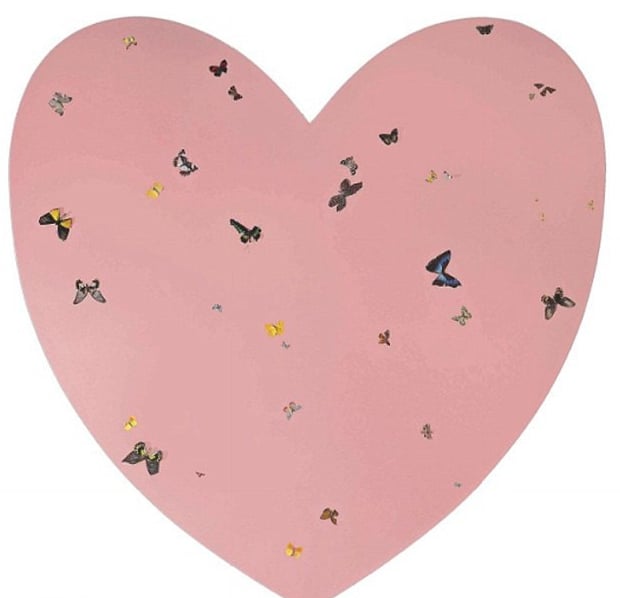

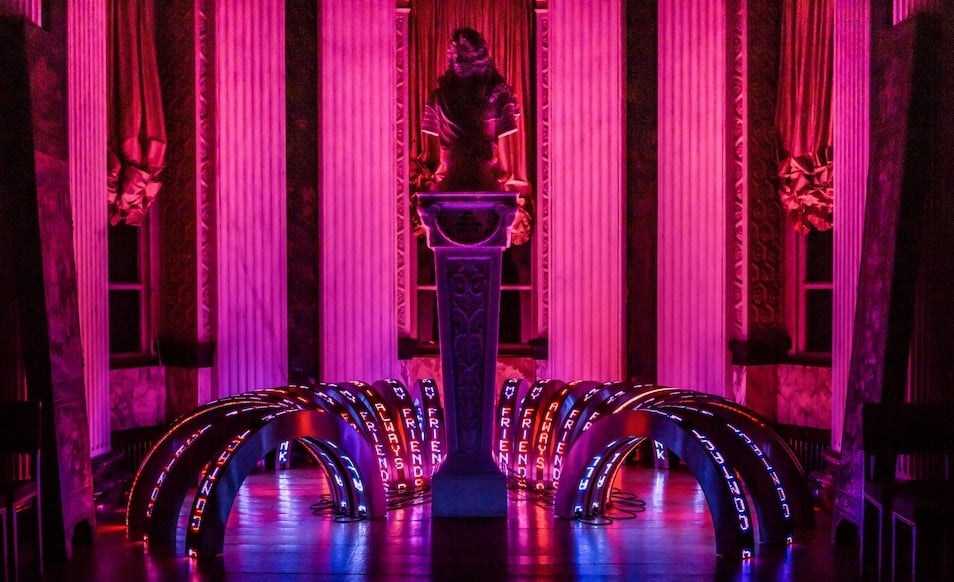

Luxury Homes Are the New Art Galleries
The private homes of celebrities are being transformed into private art galleries. But even large country estates are starting to market themselves as art museums.
There is a growing trend of heritage country houses being used as exhibition spaces for contemporary artists.
In 2014, the American artist Jenny Holzer staged her Softer exhibition at an unlikely venue — Blenheim Palace in Oxfordshire. The success of the exhibition was due in no small part to the collision of Holzer’s contemporary art and the eighteenth-century mansion in which it was sited.
An LED installation surrounded a bust of the Duke of Marlborough, with centuries-old marble altered by bright electric lights.
The choice wasn’t random. Holzer’s lit-up words are testimonies of war that chime poignantly with the stone portrait of war general John Churchill, Duke of Marlborough.
Visit Tate Modern
Image Courtesy of The Guardian , Jenny Holzer’s LED installation around the Duke of Marlborough’s bust.
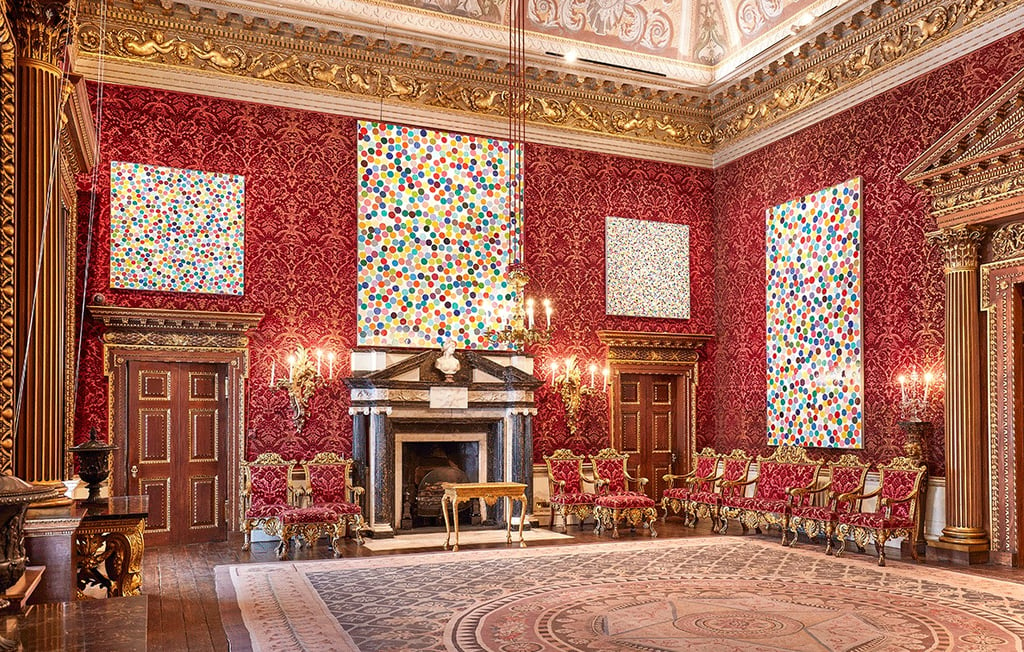

Image Courtesy of Cagosian.com
Not all artistic uses of grand country houses carry such a heavy message. In 2018, the Renaissance portraits on display at Houghton Hall in Norfolk were temporarily replaced by Damien Hirst’s Colour Space works.
See Art Basel
The clash between Hirst’s contemporary brightly coloured dots and the timeless grandeur of Houghton Hall’s chandeliered chambers is playful and thought-provoking.
The beautiful rooms of Chatsworth House, built in 1549 by Bess of Hardwick and her husband Sir William Cavendish, are currently filled with an exhibition of contemporary art and fashion titled Gorgeous Nothings.
Pitzhanger Manor, once the country home of Sir John Soane (1753–1837), has hosted exhibitions by artists from Grayson Perry to Anish Kapoor.
Right now, the manor is celebrating a major retrospective of printmaker Howard Hodgkin, whose vivid, gestural prints animate the building and make it feel fresh and alive.
Hosting exhibitions by prominent artists injects novelty into historic houses, allowing them to stay relevant and safeguard their legacy by boldly reimagining and redecorating their well-trodden spaces.


Real Estate That Isn’t Real?
The newest and trendiest overlap between luxury real estate and art is, of course, crypto-art — or digital art. Sometimes known as NFTs (non-fungible tokens), digital artworks of properties made from pixels, not bricks, are having a serious moment on the high-end art market.
NFTs — authenticated using blockchain technology — have risen dramatically in popularity since the pandemic. In fact, at one point the NFT market was reportedly worth more than $250 million.
NFTs can refer to a range of media forms: music, memes, videos, art, tweets. They are digital collectibles proven to be unique and irreplaceable.
Some galleries have been engaging with crypto-art for years. The Petzel Gallery in New York began dealing with NFTs as early as 2016.
In 2021, Christie’s became the first major auction house to sell a digital artwork and accept cryptocurrency as payment. The NFT in question — a collage by digital artist Beeple (Mike Winkelmann) — sold for $69,346,250 to blockchain investor Metakovan.
Trailblazing artist Krista Kim made history in 2021 by selling her digital home, a virtual project she titled Mars House, for 288 Ethereum coins (approximately $500,000).
Image Courtesy: Krista Kim, Mars House Robb Report
It might seem strange that investors are paying cryptocurrency totals equating to millions of dollars for real estate that arguably doesn’t exist in any ‘real’ sense. These are buildings and worlds that you cannot physically step inside, touch or live in.
Nevertheless, NFTs are having very real implications for both the art and real estate worlds. They are redefining what it means to own property, and they raise fundamental questions about why we invest in it.
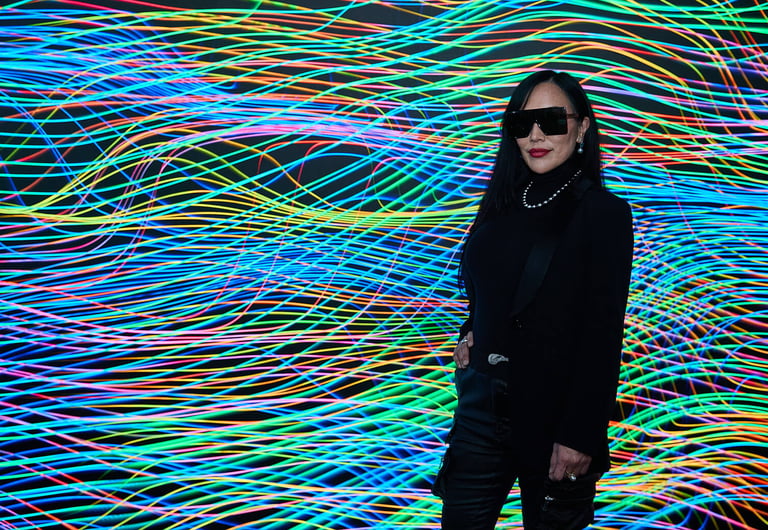

Crypto-Homes: Why the Obsession?
The question remains: what possible use can a digital residence claim to have? Why buy a 3D file of a house that you can afford to buy in reality?
There is, firstly, the obvious motive — not dissimilar to Madonna with her Kahlo portrait — of being able to show off a (digital) cultural asset worth millions. Once an NFT is encrypted, it is visible who created and owns it.
Digital architecture adds the status symbol of owning a residence purchased not for the shelter it provides, but for its own sake.
Krista Kim’s crypto-home Mars House is visually stunning. Made entirely of light, its calming blues and translucent glass-look furniture create a sense of meditative calm.
Kim partnered with musician Jeff Schroeder to create a musical accompaniment for the project that makes a virtual tour of its rooms a curated sensory experience.
Her hope is for digital art to improve wellbeing, and the gentle, ethereal beauty of her design suggests she has achieved her mission.
NFTs also allow for a fascinating metarchitecture — digital homes projected onto the walls of their owner’s real-life luxury residence. “Everyone should install an LED wall in their house for NFT art,” encourages Kim.
The design of Kim’s Mars House can even be fabricated in real life by glassmakers in Italy, meaning this NFT property has the ability to transform into a physical structure.
Heart Space, Installation view, a new artwork Commissioned by Julius Baer, 2024, Krista Kim Image: Courtesy of Krista Kim and Julius Baer
Final Thoughts
With celebrities using famous art to decorate their houses, historic properties opening themselves up as exhibition spaces, and art collectors investing in luxury digital homes, the link between art and real estate is stronger than ever.
Since the introduction of NFTs as a new asset class, it’s becoming harder to distinguish between the two. High-net-worth individuals are no longer seeking from art a simple investment but a fully immersive experience — a digital world constructed in virtual reality.
At the same time, investors are no longer looking to buy a house to live in literally, but to “live in” symbolically.
In a way, digital homes are luxury real estate in a way that real homes can never be — inessentially desirable, a self-aware indulgence, not a need.
Investors recognise that luxury NFT homes embody an untouchable, unattainable quality which lends itself perfectly to the exclusivity luxury demands.
Instead, art collectors recognise that luxury NFT homes embody an untouchable, almost mythical quality — one that perfectly captures the essence of exclusivity that true luxury demands.
So, as this new season of collecting unfolds, it’s worth embracing the convergence of art and architecture wherever you can. Incorporate art into your interior design plans, spend a weekend wandering through contemporary installations in a country house, or — if fortune favours you — invest in a digital home of your own.
After all, whether built in marble or code, the most valuable properties are the ones that make us pause, imagine, and dream.
Discover more stories exploring how art, design, and architecture continue to shape modern culture in our Arts & Culture archive.
Embrace the Art of Luxurious Living
Curated luxury experiences for discerning individuals worldwide.
© 2025. Stylish London Life. All rights reserved. Stylish London Life is not liable for the content of external websites linked to this platform. Part of SLL Global Living Ltd (16177510)
